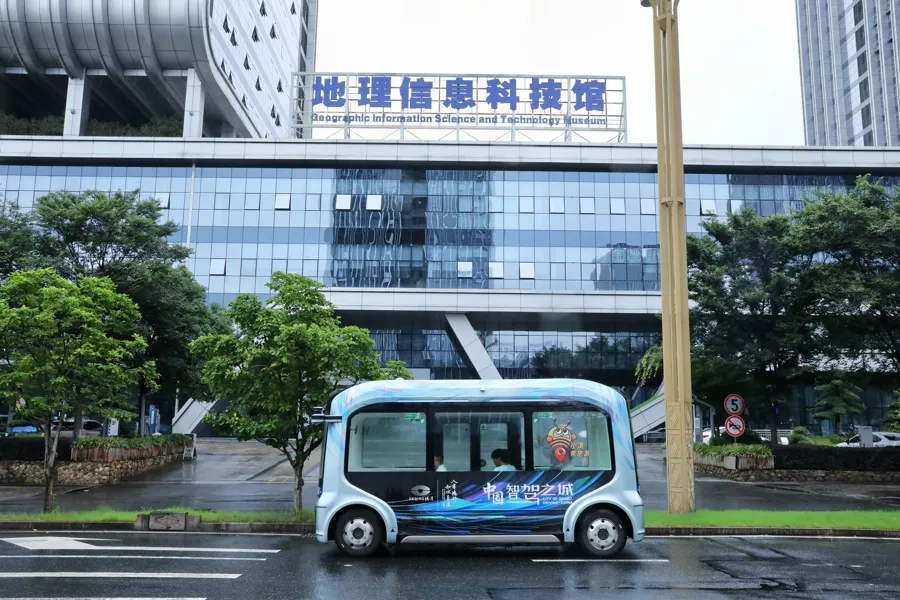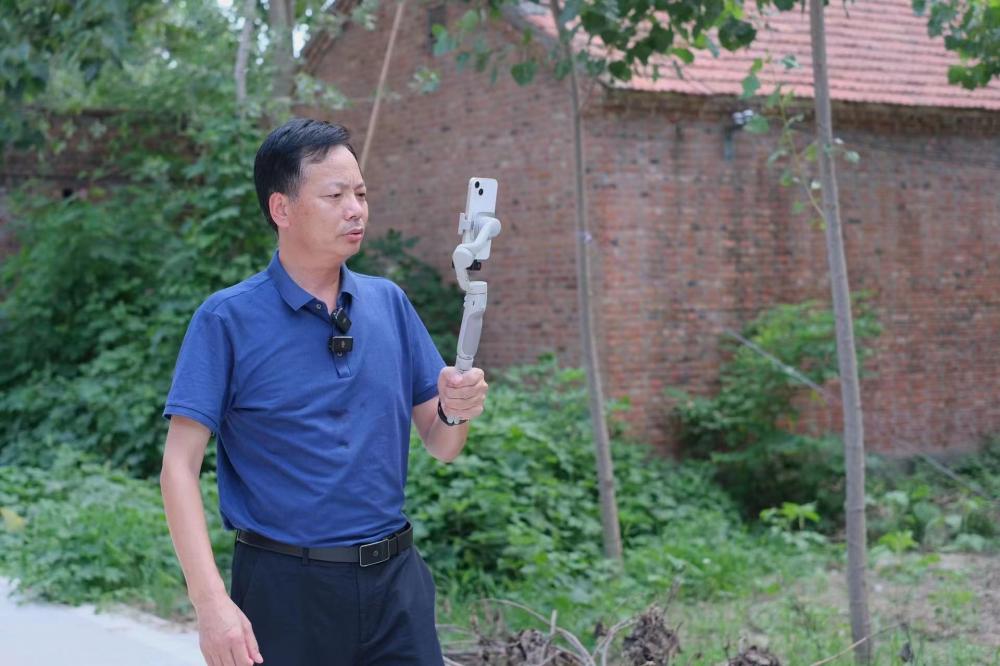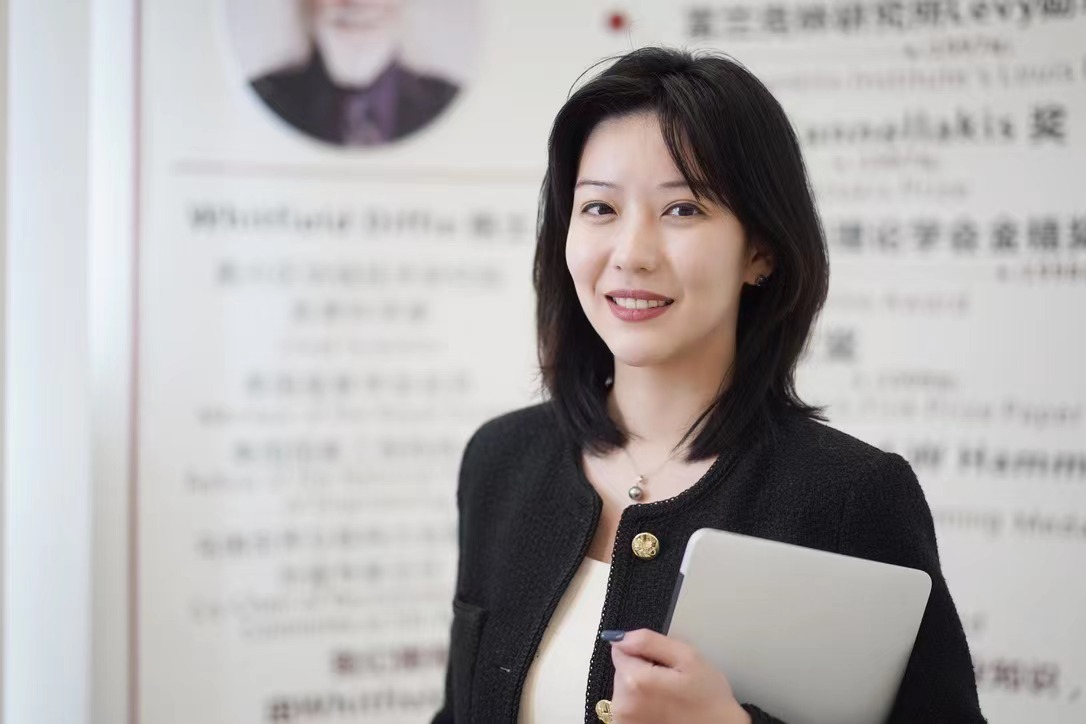What can unite Hangzhou, Tongxiang and Deqing?
Private car owner Feng Yu was driving on Deqing Avenue. This is a main road in Deqing County and also a "smart road". The car drove into the shared bus lane. At this moment, the intelligent network-connected vehicle-mounted unit installed in the car broadcasted to her: There is a bus coming in from behind, please leave as soon as possible. Last September, Deqing County recruited 100 "OBU experience officers" to install vehicle-mounted units for them free of charge, debug the system, and experience the "smart road". Feng Yu is one of the experiencers. She works in the main urban area and happens to pass by the "smart road". "I can use it every day when I go to and from get off work. It feels very convenient. It improves the flexibility of driving and gives me a lot of sense of security." She said. This communication terminal placed in the car can communicate with the roadside unit through a direct link, allowing the vehicle to receive information collected by the roadside infrastructure. For example, when waiting for the traffic light at the intersection, her car is blocked by a large truck in front of her. The vehicle-mounted unit will broadcast the countdown of the traffic light, and if there are pedestrians "ghostly poking their heads out", it can also remind them in time. So, can a car with such a function drive all the way from Deqing to Tongxiang or Hangzhou "smartly"? The answer is, maybe not now. At present, there are not many "smart roads" like this in various places, and they are in a "fragmented" state. In addition, in the previous development of intelligent connected vehicles, each city was accustomed to "fighting alone", so the barriers between different cities have not been broken. However, things have taken a turn for the better recently. In early July this year, the Ministry of Industry and Information Technology and five other departments issued the "Notice on the Announcement of the List of Pilot Cities for the Application of "Vehicle-Road-Cloud Integration" for Intelligent Connected Vehicles", and identified 20 cities including Beijing, Shanghai, Shenzhen, Guangzhou, Wuhan, Chongqing as the first batch of "Vehicle-Road-Cloud Integration" application pilot cities to accelerate the formation of replicable and popularizable experience nationwide. Among them, the Hangzhou-Tongxiang-Deqing consortium is one of the only two cities selected in the form of a consortium, and the other is the Haikou-Sanya-Qionghai consortium. How to break down regional barriers and let intelligent connected vehicles run between cities, the experience of the consortium may serve as a sample.
The construction of "vehicle-road-cloud integration" includes three parts, namely, vehicle-mounted terminals, roadside infrastructure and cloud control platforms, which are what we often call "smart cars", "smart roads" and "powerful clouds". The integrated and coordinated development of the three is one of the important paths to achieve autonomous driving. Among them, "smart roads" and "powerful clouds" are usually led by the government, while car companies need to build communication modules that are adapted to the "vehicle-road-cloud integration" function on the basis of the current single-vehicle intelligence. So the question is, should the government build the "road" and "cloud" first, or should the cars with relevant functions be opened first? This may be a question of whether the chicken or the egg comes first. It is estimated that the price of building a smart standardized intersection is about 200,000 yuan, while the price of building a smart highway is more than 1 million yuan per kilometer, because the requirements of various construction standards are higher. In addition, many roadside equipment needs to be updated and iterated within 2-3 years. In addition to the expensive equipment, there are also civil engineering costs. New roadside infrastructure requires opening up pipelines and laying fiber optic cables. At the same time, the poles for equipment placement are expensive, reaching the level of 10,000 yuan, and a standard intersection usually requires 4 poles. In order to reduce costs, sometimes "borrow poles" from traffic police. For local governments, building and upgrading smart roads is a large investment. If the road is built but no vehicles use it, isn't it built in vain? Especially when the number of cars with relevant functions is not large enough and the user base is not large enough, it is difficult for the government to further explore payment models and value-added services, and a commercial closed loop cannot be formed. At present, Deqing already has hundreds of kilometers of "smart roads". As early as 2019, Deqing Geo-Information Town gave priority to the construction of 7.8 kilometers of smart roads as a demonstration, and later expanded it by hundreds of kilometers in both directions. Tongxiang has built smart transformation projects such as roads around Wuzhen Scenic Area, Puyuan Avenue, and Yingbin Avenue, with a total length of 20 kilometers.
Photo, Hangzhou, May 23, 2024. An autonomous shuttle demonstration line bus is driving on the road in the Future Science and Technology City in Yuhang District, Hangzhou City, Zhejiang Province.
However, the number of vehicles running on smart roads is still limited. At present, the main users of these roads are traffic management departments and a small number of low-speed unmanned vehicles on the road for testing, such as road sweepers and express delivery vehicles. Obviously, relying solely on the government to promote the use of smart roads is not a long-term solution. The active participation of car companies is more important, but the attitude of car companies is still lukewarm.
On the one hand, if a vehicle wants to connect to the "smart road" and the "powerful cloud", it needs to install a communication module in advance, which will inevitably increase the cost of each vehicle. At the moment when the price of new energy vehicles is involuted, car companies will fully consider the input-output ratio, which is obviously not cost-effective. On the other hand, since the "smart roads" in various places are in the small-scale demonstration stage, the interconnection between cities has not yet been formed. If companies want to connect their vehicles to smart roads, they need to connect with each city one by one to register and open services. In addition, the construction standards have not yet been unified, and there is a certain gap in the performance of roadside equipment in different cities. For example, the delay caused by insufficient perception accuracy will affect the operation of vehicles. "The news on the roadside can make up for the shortcomings of intelligent connected vehicles and autonomous driving vehicles in perception, especially in the aspect of beyond visual range, which can better avoid safety risks. This is also the value recognized by car companies. In fact, many car companies have verified the entire technical route of vehicle-road collaboration in their own technology research and development, but lack large-scale scenarios for them to apply." Shen Chenjie, a staff member of Zhejiang Deqing Moganshan Zhilian Future Technology Co., Ltd., a construction and operation unit of the national-level vehicle networking pilot zone, told reporters. Therefore, before the construction of "vehicle-road-cloud integration" is scaled up and interconnected, companies generally take a wait-and-see attitude, and most car companies are still taking the route of single-vehicle intelligence. But for autonomous driving, single-vehicle intelligence has a ceiling. Li Keqiang, chief scientist of the National Intelligent Connected Vehicle Innovation Center, once said that the upper limit of single-vehicle intelligence can only approach that of excellent human drivers, and only "vehicle-road-cloud integration" can have the potential to surpass human drivers.
In January this year, five departments jointly issued the "Notice on the Pilot Work of "Vehicle-Road-Cloud Integration" Application of Intelligent Connected Vehicles". Interested cities can prepare materials and sign up on their own. Tongxiang is one of them. In the automotive industry, although there are related new energy vehicles, parts, batteries and other enterprises such as Hozon Auto, Tongxiang still lacks automotive chips and autonomous driving solution companies. If you want to build a "smart car city", attracting investment is the key. In addition, Baidu Apollo's driverless car has landed in Wuzhen for nearly 3 years, but due to relevant policy restrictions, it is still in the demonstration and testing stage and has not yet entered commercial operation. It is also in urgent need of policy breakthroughs. Therefore, once selected for this "Vehicle-Road-Cloud Integration" application pilot, many constraints may be solved. After nearly 4 months of preparation, Tongxiang submitted the materials to the Zhejiang Provincial Department of Economics and Information Technology for preliminary review, and Hangzhou City and Deqing County also submitted materials. On the map, Hangzhou, Tongxiang and Deqing happen to be adjacent to each other, and they are connected to each other by national roads, county roads and highways. Separately, the three places have their own characteristics. Hangzhou is one of the first cities in China to demonstrate and promote new energy vehicles. Tongxiang is a 5G Internet of Vehicles application demonstration zone, and Deqing has successfully established a national Internet of Vehicles pilot zone. Together, the three places can complement each other's strengths: Tongxiang and Deqing both have large closed intelligent networked vehicle test sites; Tongxiang's "Wuzhen Light" supercomputing center can provide sufficient computing power support for the construction of cloud control platforms. At the same time, Wuzhen and Puyuan, two representative ancient towns, have extended a large number of unmanned driving application scenarios through tourism; Deqing has a good industrial foundation, with more than 50 Internet of Vehicles and geographic information-related companies. In addition, it has participated in some national projects in technical innovations such as the rapid review mechanism of autonomous driving maps. Although Hangzhou still lacks "smart roads" for the time being, it became a national intelligent networked vehicle demonstration zone in 2016, and has a long history and experience in testing and application. Hangzhou is not only the first provincial capital city in the country to legislate for intelligent networked vehicles on the road, but also the first city in the country to legislate for low-speed unmanned vehicles. At the same time, Hangzhou's two trillion-level industries, smart Internet of Things and high-end equipment, have developed steadily, forming a complete industrial chain, and the scenarios open to automobile companies for application are extremely rich.
A driverless minibus running in Deqing. Photo provided by the interviewee.

After much deliberation, the Zhejiang Provincial Department of Economics and Information Technology finally decided to recommend the three places as a consortium. Hangzhou, Tongxiang and Deqing will compile their own materials and "do it in a negotiated manner". Seeing that Hangzhou-Tongxiang-Deqing was submitted as a consortium, the experts in charge of the review were delighted. "The experts recognized the form of our consortium and valued cross-domain interoperability, so they gave it a relatively high score in the end." Speaking of the selection of this pilot, Fan Tingxian, head of the Digital Industry Section of the Tongxiang Municipal Bureau of Economics and Information Technology, said. "Our three places in Zhejiang happen to be connected, so we can create a small model first. What problems and difficulties exist in the process of the joint effort? When we open up between larger cities in the future, we may be able to avoid these detours." Fan Tingxian said. In August this year, the relevant departments of "vehicle-road-cloud integration" in Hangzhou, Tongxiang and Deqing sat down together to communicate on the plan. "First of all, we need to design the route well." said Zhao Jie, deputy director of the Geographic Information Development Center of Moganshan High-tech Zone, Huzhou. As for which route to choose to connect with Hangzhou, Deqing tends to connect with Yuhang District, which can be combined with the creation of the Hangzhou West Science and Technology Innovation Corridor. In Hangzhou, Linping District is also very willing to participate, but the final plan has yet to be further determined. The second is the unification of standards, including the unification of construction standards such as roadside infrastructure and cloud control platforms. From a technical point of view, data connection can be achieved, but because it involves many main units, the establishment of a cross-regional coordination mechanism is more difficult. Fan Tingxian believes: "The cooperation between the two sides is very important, and trust is very important." "We hope to be able to incorporate some of the models we are exploring into the consortium plan, such as high-precision map crowd-source update technology." Zhao Jie added. This technology uses passenger vehicles equipped with sensors such as lidar and cameras to collect road information during driving and upload it to the cloud for processing, update high-precision maps, and then give them to vehicles for use. There is also the mutual recognition of intelligent networked vehicle testing in different places. Previously, the "Detailed Implementation Rules for Road Testing and Demonstration Application Management of Intelligent Networked Vehicles in Deqing County" was issued. By reviewing the commissioned inspection reports, qualification certificates and other relevant certification materials of the car companies, it is assessed whether they meet the mutual recognition standards. If successful, real car testing can be carried out in specific areas of Deqing. Zhao Jie also has some fantasies, such as whether unmanned buses can be put into use in the future to realize cross-regional operation between Hangzhou and Deqing, and even set up unmanned car sightseeing routes to connect famous attractions in the consortium such as Wuzhen and Moganshan to drive tourism.
After 20 cities were identified as the first batch of pilot cities for the application of "vehicle-road-cloud integration", the signal to push the construction of "vehicle-road-cloud integration" towards scale and connectivity is getting stronger and stronger.
In July this year, the second phase of Deqing Smart Road Project was put up for public bidding, and new vehicle networking roadside infrastructure was built on 147 kilometers of roads in Deqing County to achieve full coverage of vehicle networking. In order to increase the penetration rate of vehicle networking in passenger cars, Deqing has released key scenario application plans. By 2025, it plans to implement intelligent networking transformation of 30,000 vehicles, allowing more people to become "OBU experience officers". Deqing also proposed that by 2025, it plans to put more than 1,000 smart shared electric motorcycles, 30 smart driving online ride-hailing vehicles, and 40 smart driving sanitation vehicles into real use of smart roads.
Deqing’s “Road of Wisdom”, photo provided by the interviewee.
On the other hand, the construction of the cloud control platform has also taken shape. Led by Huzhou Moganshan State-owned Capital Holding Group Co., Ltd., Deqing is building a cloud control platform that meets the requirements of "vehicle-road-cloud integration" and is making every effort to create an ecological closed loop of "smart cars-smart roads-coordinated clouds-flexible networks-high-precision maps". "In addition to serving regulatory authorities and intelligent connected vehicles, the important role of the cloud control platform is to maximize the value of data." said a staff member of the Deqing cloud control platform. By processing the data, data products can be formed and sold to customers in need. For example, the government can use these data for traffic management, scientific research institutions for project research, and car companies for algorithm training. In August this year, Tongxiang City held the "vehicle-road-cloud integration" ecological integration development conference. This is the first time that Tongxiang has held a city-level industry conference since it was selected as one of the first batch of "vehicle-road-cloud integration" application pilot cities in the country. Tongxiang specifically invited a group of companies related to vehicle-road-cloud. Originally, only 60 seats were arranged, but in the end, all seats were full, and chairs had to be moved in from outside the venue. "Some companies have several people coming, including the heads of the strategy department and sales department, and some companies have invited partners to participate." It was the first time that Fan Tingxian saw such a scene. At the meeting, Tongxiang issued two policies, namely the industry landing policy and the test application policy. It is proposed to create five application scenarios of "vehicle-road-cloud integration" of smart public transportation, urban logistics, smart sanitation, smart travel, and smart scenic spots, and use the entire city as a "testing ground". 11 new intelligent networked vehicle projects were signed in a centralized manner, with a total investment of 2.99 billion yuan, covering hardware modules, intelligent software, scene operations and other fields. In particular, medium and low-speed unmanned driving scenarios such as unmanned logistics and unmanned retail may first run on these "smart roads" and be the first to achieve commercialization. When the area covered by the "smart road" becomes larger and larger, the data collected by the "powerful cloud" becomes more and more abundant, and data transactions will become more common in the future. This is also a way for the government to recover its investment costs and form a closed business loop. The future of intelligent transportation is still worth looking forward to.

![[Yangtze River Delta Daily] The Secretary of the Party Committee of Xiaoxian County, Anhui Province was investigated. Tao Guanghong | Strategy | Secretary](https://a5qu.com/upload/images/6f01993c5ea7cbfc7d974d67070fcdac.jpg)



